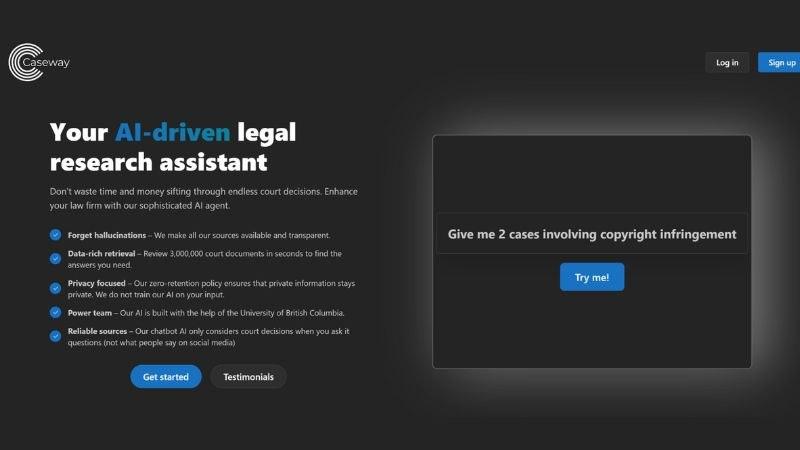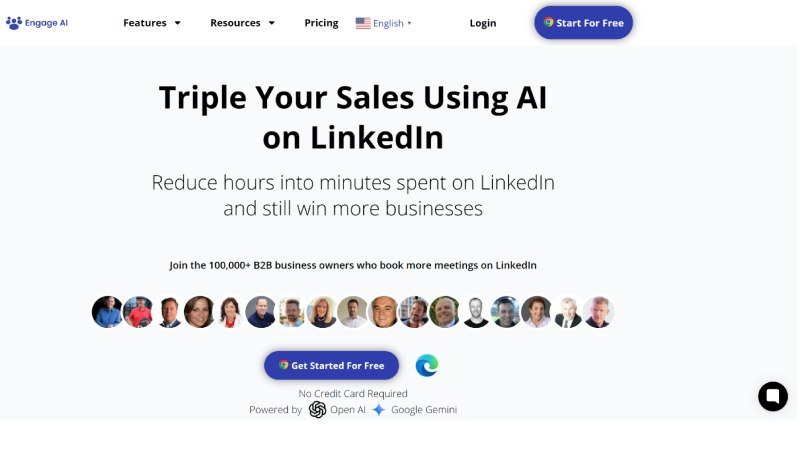Going digital is no longer a choice for companies but a must. Businesses are turning to new tech to stay in the game. The tools available are changing industries, from dealing with tricky legal rules to making client interactions smoother.
Law firms are using tech to make things faster, more accessible, and more affordable for clients—removing much of the hassle that used to come with legal work. At the same time, AI is helping businesses improve how they talk to customers, automate tedious tasks, and get more valuable insights from data. This is leading to a smoother and more personalized experience for everyone.
This shift isn’t just about running things more efficiently; it’s completely changing the face of modern business. Lawyers are now offering quicker, more precise advice, and AI is helping companies anticipate what customers need before they even ask.
As the business world keeps changing, those who want to stay ahead must embrace these advancements. By combining legal tech with AI-powered tools, companies can meet the demands of today’s fast-paced, connected world. Let’s get into how these innovations are shaking up the business landscape and what it means for organizations trying to keep up.

Caseway AI: A Game-Changer in Legal Technology
Alistair Vigier aims to change the legal industry by integrating advanced technology, specifically machine learning, into legal processes. Alistair is making a real impact by simplifying legal work for professionals and clients in a field where things are traditionally slow, expensive, and complex. At the heart of this transformation is Caseway AI, a creative tool designed to take on one of the most time-consuming tasks in the legal world: case law research. Instead of lawyers spending hours combing through pages of court decisions, Caseway AI scans millions of rulings in seconds and delivers relevant case law directly to the user.
What sets Caseway apart is its laser focus on court decisions. Unlike other AI tools that pull data from all over the internet, Caseway sticks strictly to judicial rulings, ensuring that every result is accurate and reliable. The platform aims to help lawyers, paralegals, and self-represented people avoid the hassle of sifting through irrelevant or unreliable sources. For example, finding specific case outcomes is a significant pain point for lawyers.
Caseway AI’s machine learning model can intelligently filter through millions of documents to find the ones that matter, making it a lifesaver for legal professionals who don’t want to get bogged down in endless paperwork.
With self-representation on the rise due to the high cost of legal fees, Caseway provides a much-needed tool for those navigating the legal system independently. Its affordability and accessibility make it an excellent fit for a wide range of users, from individuals seeking legal aid to larger law firms trying to cut costs.
Caseway’s traction
The platform has already proven itself in the market. Caseway saw 170 lawyers sign up for the tool in the first 15 days of its launch. That early traction speaks to the demand for this kind of tech in a sector that has historically lagged in adopting new tools. It’s not just a time-saver; it also enhances accuracy and trust, as each search result is tied directly to court records, allowing users to cross-check results in legal databases like CanLII or LexisNexis. This level of transparency helps build confidence for lawyers using artificial intelligence, something that’s critical in the legal world where trust and accuracy are everything.
Beyond the current product, Caseway AI is set on even more ambitious goals. With partnerships like the one they’ve secured with UBC, Caseway is looking to improve how its machine interprets the subtleties of legal language. It’s not just about finding cases faster—it’s about finding suitable cases, even when legal language gets complicated or judges use alternative phrasing.
As noted by Caseway’s CEO, Alistair Vigier, one challenge they’re working on is how the AI sometimes misses cases due to subtle differences in wording, like when a judge says “charges dismissed” instead of “not guilty.” They’re addressing these kinds of challenges through continuous development and collaboration with legal and academic experts.
Engage AI: Transforming Customer Engagement

Description:
Engage AI is a robust platform that leverages artificial intelligence to enhance customer engagement and streamline business communication. By offering a range of AI-driven tools, Engage AI helps businesses augment responses, optimize sales efforts, and deliver personalized prospecting experiences at scale.
The Pain of Automated Prospecting on LinkedIn: It’s frustrating to open LinkedIn and be bombarded with spam and automated messages that clearly don’t care about who we are or what we do. Each time we receive one, we feel like we’re just a random target in someone’s automated campaign, not a person worth connecting with.
AI Augments Engagements for You: Engage AI leverages large language models to enhance comments and boost engagement with your prospects on LinkedIn. With Generative AI, your sales team gets quick, precise responses, saving time and eliminating the need to constantly brainstorm the perfect comment for prospect posts. Engage AI keeps the human touch intact by allowing your team to review, personalize, and finalize each comment before hitting the post button, ensuring authentic interactions every time.
Why It Works: Commenting-for-Attention works on LinkedIn because it allows you to engage with prospects in a space that feels more authentic and less crowded than direct messages or email inboxes. Unlike DMs or emails, which are often flooded with spam and automated pitches, the comment section is a public, transparent space where genuine interaction stands out. By leaving thoughtful, value-driven comments, you can capture attention in a way that feels organic and fosters meaningful connections without the pressure or impersonal nature of automated outreach.
Monitoring Prospects: Engage AI takes the hassle out of monitoring your prospects’ posting activities, saving you from endlessly scrolling through LinkedIn’s newsfeed or manually checking for new updates. It consolidates all relevant posts onto a single page, allowing you to quickly focus on the most important opportunities and people for your business, ensuring you never miss a key moment to engage.
Fits Right Into Your System: You don’t have to worry about overhauling your existing tools to make Engage AI work. It smoothly embeds into your LinkedIn workflow and integrates with whatever CRM or communication tools you use, so it’s easy to implement without slowing down your operations.
Works for Any Size Business: Whether you’re a small startup or a large corporation, Engage AI is built to scale. It grows with your business and ensures you can maintain strong customer engagement no matter how big you get.
Why Bother with Engage AI?
Engage AI isn’t just another shiny tech tool—it transforms how your business engages with prospects on LinkedIn by leveraging powerful AI tools to save time and enhance personalization. It automatically tracks your prospects’ posts, consolidating them in one place so you never miss an opportunity to connect. Plus, its AI-augmented comments help you respond quickly and effectively, while still allowing you to add a personal touch before posting. Engage AI empowers you to focus on building authentic relationships without the hassle of manual tracking or the stress of constantly crafting the perfect response.
Bottom Line
AI is changing the game across industries, from prospecting to segmentation. Using AI for tasks like augmenting responses or monitoring their posting activities saves time and boosts accuracy and personalization. Whether you are trying to improve your sales pipeline or engagements with clients, AI-driven platforms like Engage AI can help you work smarter, reduce errors, and grow your business simultaneously.
Frequently Asked Questions About AI
Q: What’s AI all about, and how does it work?
A: AI, or Artificial Intelligence, teaches machines to think like humans. It’s about getting computers to understand things like language, recognize patterns, and make decisions, which usually require human intelligence. AI uses algorithms, machine learning, and neural networks to learn from data, improve tasks over time, and adapt to new situations.
Q: How are businesses using AI these days?
A: AI is popping up in various industries, helping companies automate processes, interact with customers, and make smarter decisions. Consider AI chatbots answering customer questions or AI tools in law firms to speed up research. It’s also making a big impact in marketing, healthcare, finance, and manufacturing—helping businesses work more efficiently and improve outcomes.
Q: What’s the difference between AI and machine learning?
A: Machine learning is a branch of AI. It’s about creating systems that can learn from data without needing to be programmed for every task. Machine learning looks for patterns in the data and uses those patterns to make predictions. AI is the bigger picture, which includes machine learning and other things like natural language processing and robotics.
Q: Is AI risky?
A: Like any tech, AI comes with its challenges. Job displacement due to automation is a big concern, as are ethical issues like data privacy and algorithmic bias. AI can also make mistakes—chatbots, for instance, sometimes generate inaccurate information. So, to reduce these risks, it’s important to ensure AI systems are transparent, fair, and accountable.
Q: How is AI changing the way we work?
A: AI is shaking the workplace by automating tedious, repetitive tasks, speeding up decision-making, and boosting productivity. While AI might replace some jobs, it’s also creating new opportunities in fields like AI development, data science, and machine learning. The future of work will involve humans working alongside AI, with machines handling the routine stuff while we focus on creative, big-picture thinking.